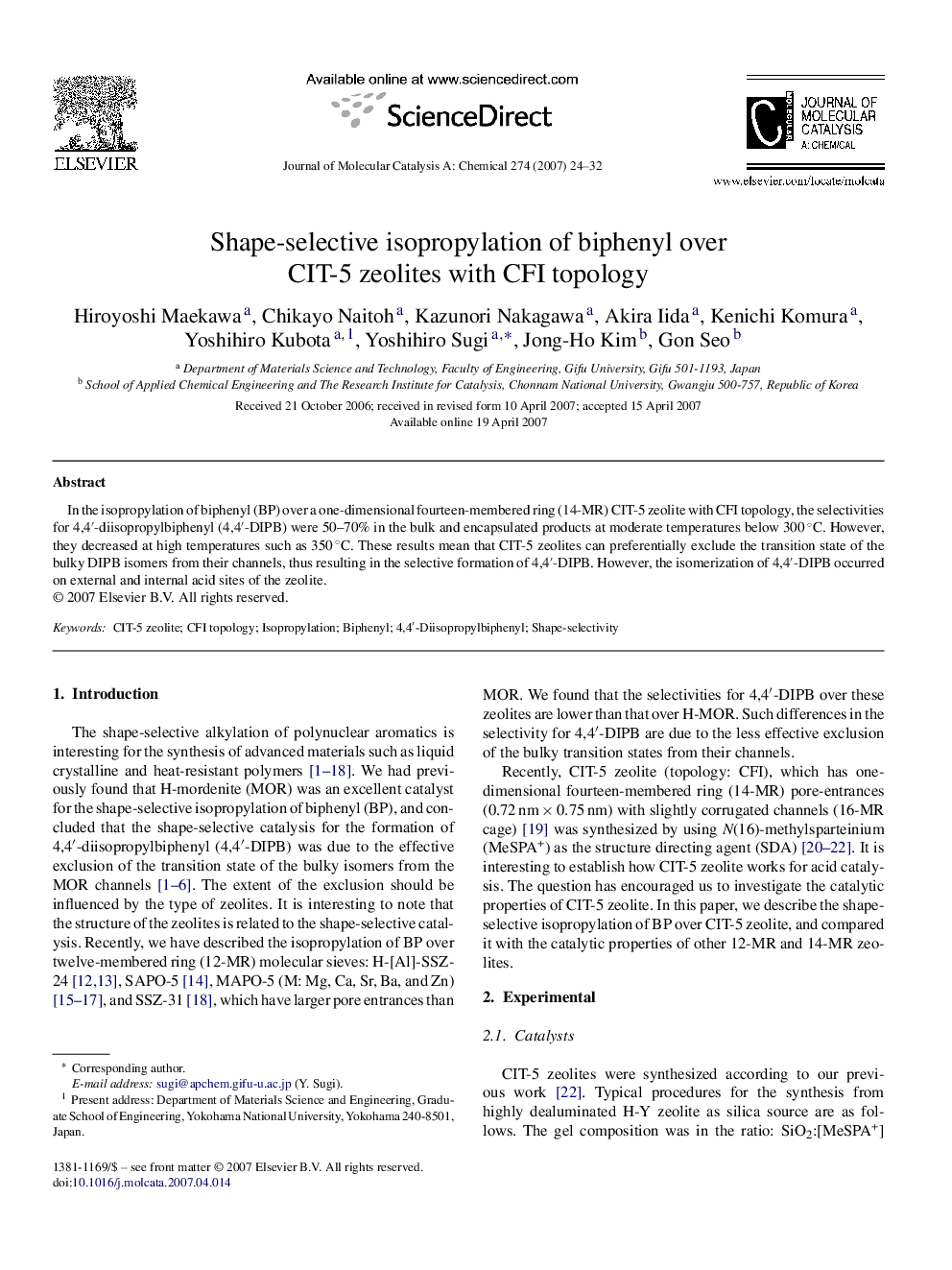| Article ID | Journal | Published Year | Pages | File Type |
|---|---|---|---|---|
| 67642 | Journal of Molecular Catalysis A: Chemical | 2007 | 9 Pages |
In the isopropylation of biphenyl (BP) over a one-dimensional fourteen-membered ring (14-MR) CIT-5 zeolite with CFI topology, the selectivities for 4,4′-diisopropylbiphenyl (4,4′-DIPB) were 50–70% in the bulk and encapsulated products at moderate temperatures below 300 °C. However, they decreased at high temperatures such as 350 °C. These results mean that CIT-5 zeolites can preferentially exclude the transition state of the bulky DIPB isomers from their channels, thus resulting in the selective formation of 4,4′-DIPB. However, the isomerization of 4,4′-DIPB occurred on external and internal acid sites of the zeolite.
Graphical abstractThe isopropylation of biphenyl (BP) was examined over CIT-5 zeolites. The selectivities for 4,4′-diisopropylbiphenyl (4,4′-DIPB) were 50–60%. The isomerization of 4,4′-DIPB occurred at high temperatures at both internal and external acid sites. CIT-5 resulted in the selective formation of 4,4′-DIPB inside their channels through a transition sate with minimal constraints; however, they also sufficiently allow 4,4′-DIPB to isomerize to 3,4′-DIPB.Figure optionsDownload full-size imageDownload as PowerPoint slide
